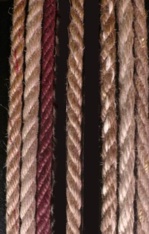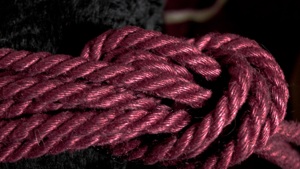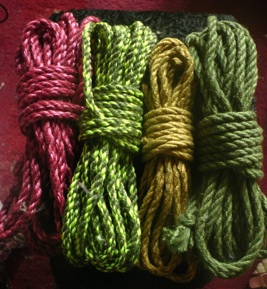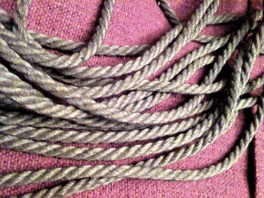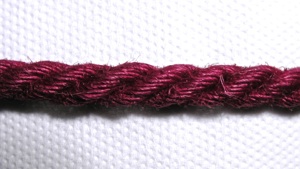2. Type of rope you want to produce
Single-ply S jute and hemp ropes are softer and more flexible than Z ropes made with the same fibres.
Their main weakness is that they are a bit more fragile than Z laid ropes and may require more maintenance and care. Under stress, they will open up more easily than Z ropes or multi-ply ropes.
On the plus side, they have a nice, well-defined surface, and when well oiled/waxed, they catch the light very nicely, as shown here:
Z-laid ropes made with multi-ply yarn are more robust than single-ply ropes and can deal with rougher handling.
When reinforced with synthetic yarn or twine (such as
the two ropes on the left side of this photo), such ropes
are very strong and require little maintenance.
For information on reinforcing natural fibre ropes,
click here



